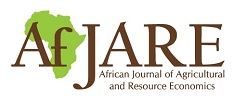Estimating profit, input demand and output supply elasticities in rice production: Evidence from Vietnam
Phuc Trong Ho, Pham Xuan Hung & Phuong Thi Minh Nguyen
Abstract
Understanding rice farmers’ responses to market prices is essential for policy makers to design effective policies to better manage input demand and rice supply. This paper applies duality theory to derive the elasticities of input demand and output supply for Vietnamese rice production using a translog profit function approach. We simultaneously estimate the translog profit function and its profit share equations using the seemingly unrelated regression method. This research uses primary farm-level data consisting of 918 observations surveyed in Vietnam’s Mekong River Delta. The results indicate that rice farmers’ production decisions and profits are more responsive to changes in paddy price than to input prices, with a supply elasticity of 0.33, indicating that a 1% increase in paddy price raises output by 0.33%. A higher paddy price also increases demand for inputs, with elasticities of 0.34 for seed, 0.67 for fertiliser and 0.94 for labour. In addition, variable profit rises by 1.77% for a 1% increase in paddy price, but declines by 0.16%, 0.35% and 0.26% in response to higher seed, fertiliser and labour prices, respectively. A comparison of variable input demand and rice supply elasticities between two rice variety groups shows that adopters of the high-quality rice variety are more responsive to market prices than non-adopters. This research suggests that policies designed on the basis of output price would affect rice farmers’ behaviour and variable profits more than those based on input prices. In addition, policy makers should be aware that the same intervention in market prices will result in a different effect on farmers’ variable profit, input demand and rice supply between rice variety groups.
